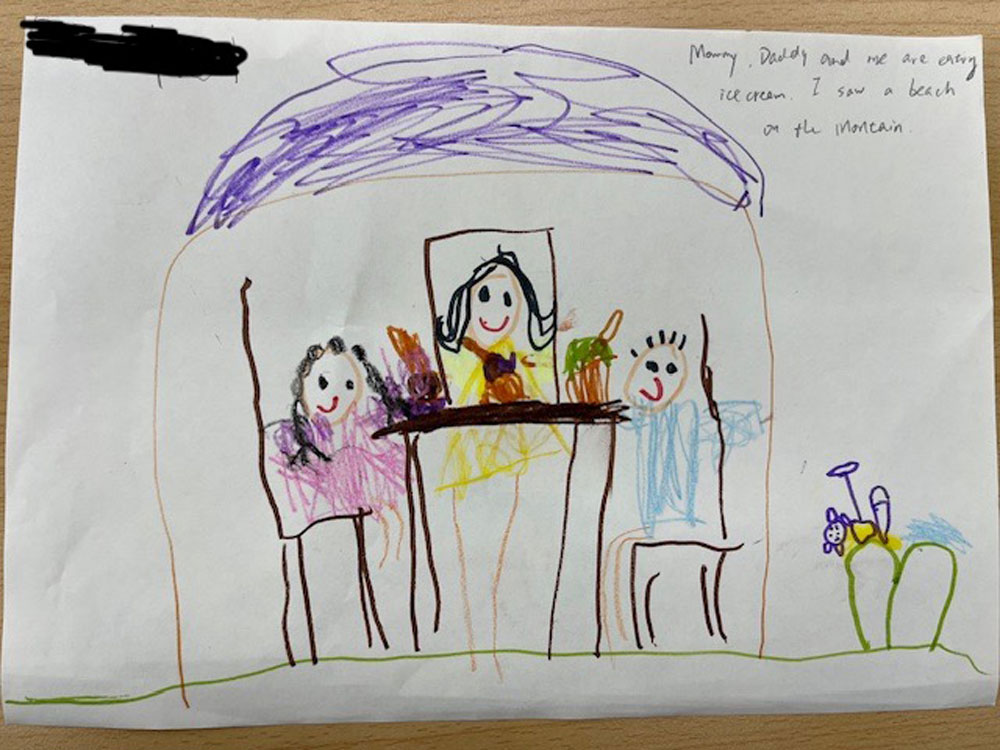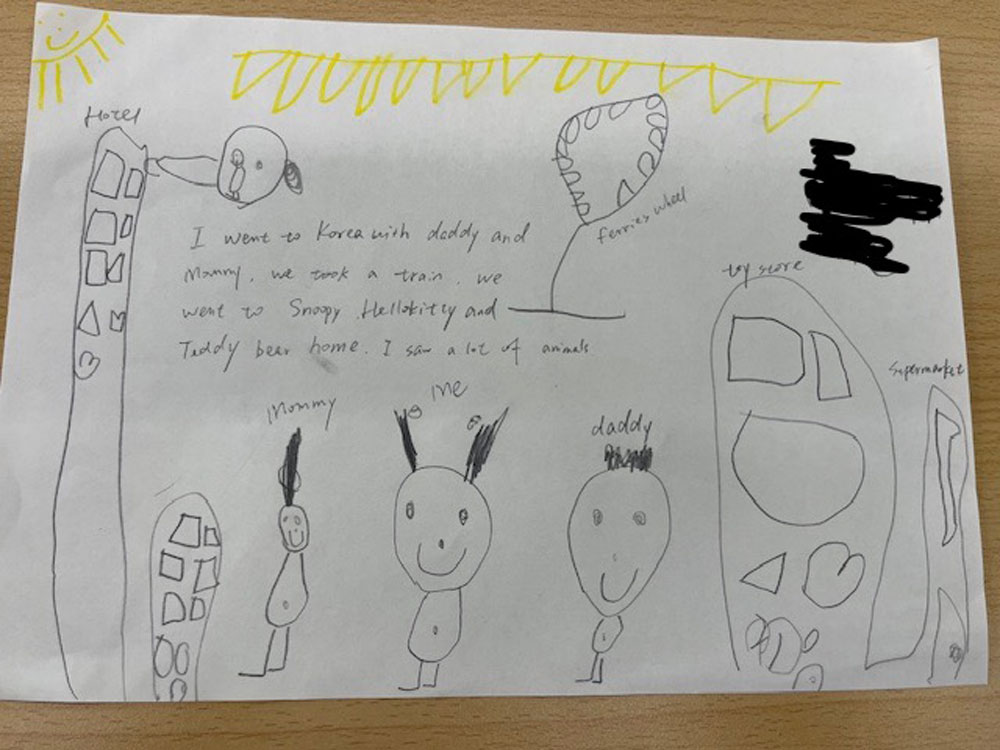
(Photo source: Andy Yang, Concordia International School Shanghai)
--------------------------------------------------------------
In October 2023, Concordia International School Shanghai proudly hosted the Association of China and Mongolia International Schools (ACAMIS) Early Childhood Education Conference. This momentous occasion marked our first in-person gathering since the onset of the global pandemic, providing a unique opportunity for international educators and leaders to convene, reconnect, and engage in rich dialogue. Amidst the exchanges, one resounding theme emerged—the critical importance of crafting meaningful learning experiences for our youngest learners, especially in light of the challenges posed by limited socialization and face-to-face interactions.
Within the confines of my session titled “Drawing to Support Young Learners’ Social-Emotional Well-Being,” we embarked on a profound exploration of the transformative potential inherent in drawing within educational contexts. While it’s commonplace to encounter the creations of young learners gracing refrigerators at home or adorning school corridors, it's imperative to recognize that these seemingly simple sketches transcend mere decorative elements. When scaffolded with appropriate language and contextual relevance, these drawings become powerful artifacts, encapsulating the intricate thought processes of young minds, and serving as potent catalysts for early literacy and language development, as well as the cultivation of prosocial behaviors.
Grounded in research findings suggesting that over 85 percent of contemporary learners exhibit strong engagement with visual motor learning systems, we delved into the profound impact that the act of drawing exerts on facilitating deeper conceptual understanding. Educators across the globe increasingly harness a diverse array of visual aids—from intricate graphics and whimsical illustrations to evocative photographs and dynamic flowcharts—to cater to the diverse needs of learners who navigate their cognitive landscapes through visual metacognition.
Throughout the duration of the session, participants were invited to engage in a reflective journey, probing the myriad ways in which drawing can serve as a dynamic tool for nurturing young learners’ literacy and language competencies as well as bolstering their social-emotional resilience. By strategically infusing drawing activities with probing questions and targeted instructional strategies, educators can foster an environment conducive to the organic emergence of nuanced linguistic meanings and empower students to construct and convey their thoughts visually. A key aspect of this process is ensuring that the concepts of who, what, when, where, why, and how are included in each series of drawings.

Central to our discussions was the pivotal role played by the alignment between the complexity of visual materials and the linguistic proficiency, social dynamics, and cognitive capacities of the learners. It became abundantly clear that the efficacy of visual aids hinges not solely on their aesthetic appeal but rather on their ability to seamlessly integrate with the learners’ existing perceptual frameworks, thereby catalyzing the construction of meaningful concepts and the articulation of coherent linguistic expressions. This process requires an assigner of meaning, typically an adult, who has knowledge of each learner’s cognitive and language levels.
In the realm of practical application, we underscored the importance of imbuing drawing activities with a sense of authenticity and relevance by incorporating depictions of the learners themselves and their peers. By purposefully utilizing thought bubbles and speech bubbles within the visual narrative, educators can empower young learners to engage in meaningful dialogues and articulate their innermost thoughts and emotions with clarity and confidence. Furthermore, grounding the visual representations within a defined framework enhances the coherence and comprehensibility of the narrative, thereby facilitating deeper levels of engagement and comprehension among learners.

In essence, the collaborative exchange of professional practices among educators at the conference served as an incentive for transformative pedagogical innovations that transcend geographic boundaries and cultural contexts. Particularly noteworthy are practices that require nothing more than a blank piece of paper, a simple black marker, and a nuanced understanding of the intricate interplay between neurobiological learning systems and language acquisition. As educators, let us embrace the transformative potential inherent in drawing and harness its power to nurture the holistic development of young learners, laying a robust foundation for lifelong learning and social-emotional wellbeing.
References
Adoniou, M. (2013). Drawing to support writing development in English language learners. Language and Education, 27(3), 261-277.
Arwood,E., Kaulitz,C., & Brown,M. (2009). The Language of Pictures. Shawnee Mission, KS:Autism Aspergers Publishing Company (AAPC).
Bakhurst, D., & Shanker, S. G. (Eds.) (2001). Jerome Bruner: Language, culture, self. London, UK: Sage Publications.
Debreczeny, L. M., Arwood, E., & Rostamizadeh, A. (2018). Drawing thinking: A supplement to the neuro-viconic education system. Tigard, OR: Arwood Neuro-Viconics.
Pulvermüller, F. (2012). Meaning and the brain: The neurosemantics of referential, interactive, and combinatorial knowledge. Journal of Neurolinguistics, 25, 423-459.
Wolfe, P. (2010). Brain matters: Translating research into classroom practice. Alexandria, VA: ASCD.
--------------------------------------------------------------
Robert D. Cantwell, Ed.D., is the Director of Early Childhood at Concordia International School Shanghai.